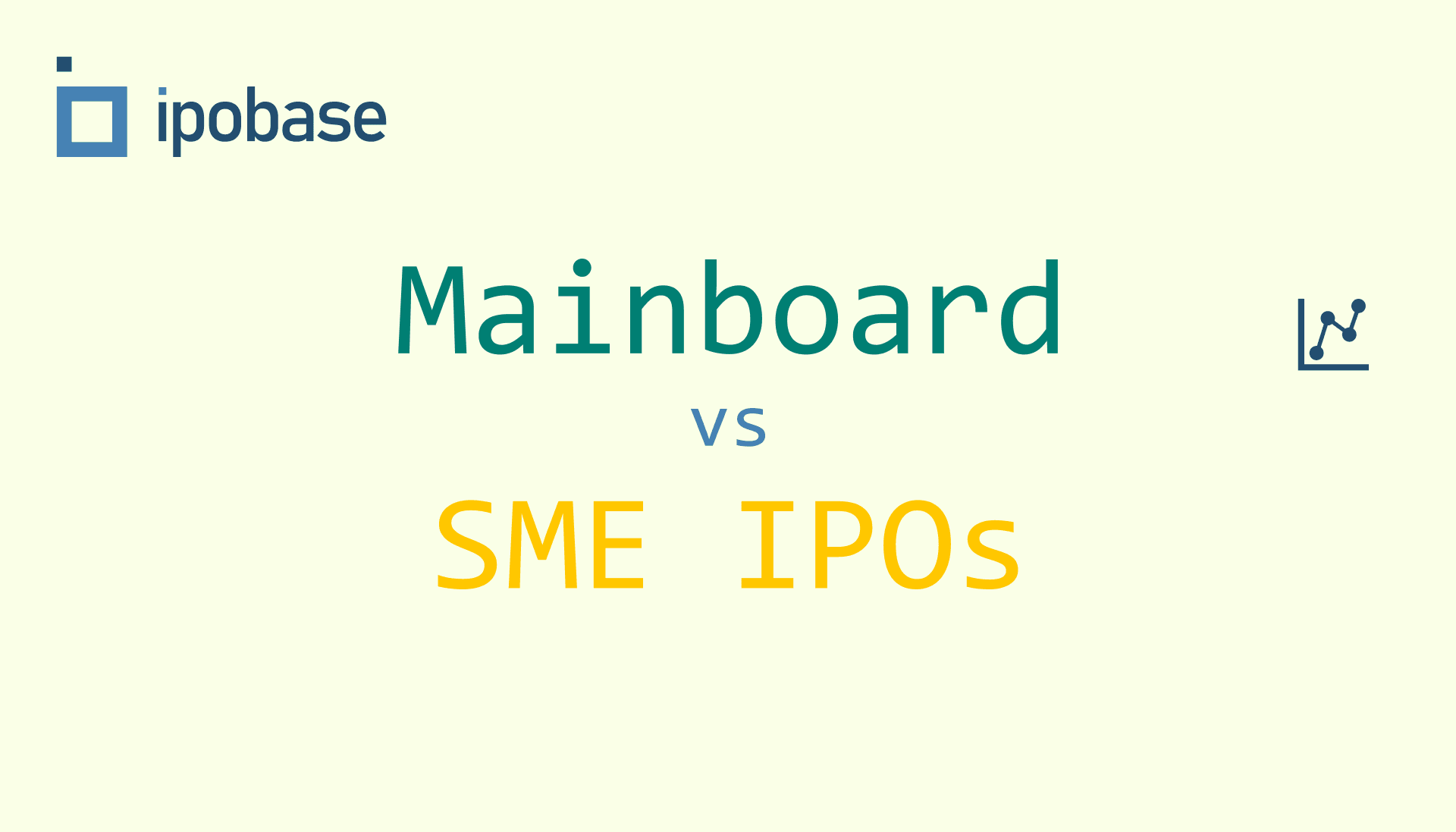Mainboard or SME? Understanding the Distinctions in IPO Offerings
SME IPOs are public offerings by small and medium enterprises, catering to early-stage companies with smaller capital requirements. These IPOs carry higher risks but offer growth potential. On the other hand, Mainboard IPOs involve larger, more established companies with stable track records. While less volatile, they require higher capital and listing fees.

Let’s delve into the fascinating world of initial public offerings (IPOs) and explore the key differences between Mainline IPOs and SME (Small and Medium Enterprises) IPOs. While both offer companies a chance to raise capital from the public, they cater to distinct needs and come with different regulations.
Mainline IPO
A Mainboard IPO, also known as a regular IPO, allows established companies with a substantial track record to raise capital by issuing shares to the public for the first time. These companies then get listed on the prominent stock exchanges in India - the Bombay Stock Exchange (BSE) and the National Stock Exchange (NSE).
Eligibility Criteria
Not every company can go the Mainboard IPO route. Here are the key requirements:
- Minimum Paid-up Capital: The company must have a minimum post-issue paid-up capital of Rs 10 crore.
- Track Record: Established companies with a strong financial performance and a proven business model are ideal candidates.
- SEBI Regulations: The Securities and Exchange Board of India (SEBI) lays down stringent norms and processes that companies must adhere to for a Mainboard IPO.
Listing Platforms
Once the IPO process is complete, the company's shares will be actively traded on the main boards of the BSE and NSE, providing investors with liquidity and an opportunity for capital appreciation.
Other Key Points
- IPO Size: Compared to SME IPOs targeting smaller businesses, Mainboard IPOs typically involve larger issue sizes, attracting greater public interest.
- Allotment: A minimum number of investors (around 1000 allottees) need to be awarded shares during the IPO process.
- Underwriting: While not mandatory, underwriting might be employed if a specific portion of the IPO reserved for institutional investors falls short of subscription targets.
- Lot Size: Mainboard IPOs typically have a lower minimum application size or trading lot, ranging from Rs. 10,000-Rs. 15,000. This allows for wider participation from retail investors.
Benefits of Investing in Mainboard IPOs
- Exposure to Established Companies: Mainboard IPOs offer investors the chance to participate in the growth story of well-recognized and financially sound companies.
- Potential for High Returns: Established companies with a strong track record often exhibit stable growth, translating to potentially high returns for investors.
- Liquidity: Listing on major stock exchanges ensures higher liquidity for the shares, allowing investors to easily enter and exit the market.
SME IPO
An SME IPO allows SMEs to raise capital from the public for the first time by issuing shares. This unlocks new funding avenues to fuel their expansion plans and establish a public presence. After the IPO, the company's shares get listed on a dedicated platform on a stock exchange.
Eligibility Criteria
Not all SMEs qualify for an SME IPO. Here are some key requirements:
- Company Incorporation: The company must be incorporated under the Companies Act of India.
- Financial Track Record: A minimum track record of financial stability is often required.
- Profitability: While not always mandatory, profitability demonstrates the company's potential for sustainable growth.
- SEBI Compliance: The company needs to comply with regulations set forth by the Securities and Exchange Board of India (SEBI).
Listing Platforms
Unlike Mainboard IPOs listed on the BSE or NSE’s main boards, SME IPOs typically have a designated platform on the exchange. This platform caters specifically to smaller companies, allowing them greater visibility and attracting suitable investors. The two platforms for SME IPOs in India are BSE SME and NSE Emerge.
Other Key Points
- Paid-up Capital: The post-issue paid-up capital of the company should be less than Rs 25 crore. This ensures the SME nature of the company.
- Underwriting: Underwriting of the IPO is mandatory, with at least 15% underwritten by a merchant banker. This helps mitigate risk for the company in case of insufficient subscriptions.
- Allotment: A minimum of 50 investors need to be awarded shares during the IPO process.
- Lot Size: SME IPOs generally have a higher minimum application size, often exceeding Rs. 100,000. This can limit participation from some retail investors but may reflect the smaller issue size of the IPO.
Benefits of SME IPOs
- High-Growth Potential: SME IPOs offer the chance to invest in companies with exciting growth prospects. Smaller businesses can be more nimble and adaptable, potentially leading to significant returns for investors who get in early.
- Portfolio Diversification: SME IPOs can add a new dimension to your investment portfolio, potentially offering higher returns and offsetting risks associated with established companies.
Risks in SME IPOs
1. Market Volatility:
- SME stocks can experience higher volatility due to lower liquidity and limited trading volumes.
- Price fluctuations may be more pronounced, impacting investor sentiment.
2. Business Risk:
- SMEs often operate in niche markets or have concentrated revenue sources.
- Economic downturns, industry-specific challenges, or changes in consumer preferences can significantly affect SMEs.
3. Financial Risk:
- SMEs may have limited financial track records.
- Investors should carefully analyze financial statements, debt levels, and cash flow stability.
4. Exit Challenges:
- SME stocks may face challenges in finding buyers during exit scenarios.
Conclusion
In conclusion, Mainboard IPOs offer stability with established companies, while SME IPOs have higher growth potential but come with greater risk due to the company's size and track record.
Ultimately, thorough research is crucial before investing in any IPO. Analyze the company's financials, business plan, and future prospects to make an informed decision that aligns with your investment goals.